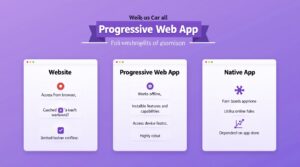click to get service View profile
Learn how to solve real user problems quickly and affordably using Guerrilla Usability Testing. Discover step-by-step methods, tips, and real-world insights to apply this lean UX research technique effectively.
In today’s fast-paced digital world, delivering great user experiences isn’t just a competitive advantage—it’s a necessity. But traditional usability testing can be time-consuming, expensive, and often out of reach for small teams or solo designers. That’s where Guerrilla Usability Testing steps in.
Imagine walking into a coffee shop, showing a quick prototype to a stranger, and walking out with real user feedback in under 10 minutes. Sounds wild? That’s the beauty of guerrilla testing. It’s quick, scrappy, and incredibly insightful when done right.
In this blog, we’ll break down what guerrilla usability testing is, why it works, and most importantly, how to apply it effectively to uncover real user problems—without breaking your budget or your timeline.
What is Guerrilla Usability Testing?
Guerrilla usability testing is a quick, affordable method to observe how real users interact with your product in everyday settings. In this approach, you bring your product to places like cafes, parks, or libraries, where you can ask random people to try it out, often offering a small gesture like buying them a coffee or saying thank you for their time.
The primary purpose of guerrilla usability testing is to quickly spot usability issues and understand how users naturally engage with your design. It helps enhance customer satisfaction and reduce the risks of launching with overlooked design problems, especially for teams with limited resources and tight deadlines.
Pros & Cons of Guerrilla Usability Testing

Guerrilla usability testing is a powerful tool for gathering quick user feedback, but like any method, it has its strengths and limitations. Let’s take a closer look at the pros and cons to help you decide if it’s the right approach for your project.
Pros
- Quick and Affordable: A guerrilla test is a budget-friendly and efficient method of usability testing. All you need is your product, a public space, and a willingness to approach people. There’s no need for expensive tools or long recruitment processes, making it an ideal option for teams with tight budgets and deadlines.
- Real User Feedback: The beauty of this usability test method is that you get raw, unfiltered feedback from everyday people. Since participants aren’t selected or prepared in advance, their reactions tend to be honest and reflect how real users might engage with your product.
- Immediate Results: Feedback is gathered on the spot, which means you can identify problems and implement fixes quickly. This rapid turnaround is especially useful during early development stages when frequent iterations are needed.
- Simple Setup: There’s no need for labs, fancy equipment, or extensive planning. Just head to a public place like a coffee shop or park, and you’re ready to go.
Cons
- Shallow Feedback: While guerrilla testing provides quick insights, the feedback is often surface-level. It’s great for spotting obvious usability issues but may not uncover deeper, more complex problems.
- Uncontrolled Environment: Public places come with distractions like noise, interruptions, and unpredictable conditions, which can affect the quality of the feedback.
- Lack of Target Audience Focus: When you ask individuals outside your target audience to test your product, their feedback may not align with the needs or preferences of your actual users. This limitation can lead to irrelevant user insights that don’t accurately inform product improvements for your core audience.
When should you use Guerrilla Testing Methods?
Guerrilla usability testing is an excellent addition to your usability studies, especially when quick, affordable feedback is needed to move your project forward. Here are some ideal scenarios to consider:
- Early Stage Prototyping
When you’re still refining your concept or prototype, guerrilla testing can help you quickly identify usability flaws before investing too much time or resources. It’s ideal when you have a low-fidelity version or early mockups to test.
- Gathering Quick, Actionable Insights:
If you’re looking for specific feedback on a particular design aspect—such as navigation, layout, or interaction flow—guerrilla testing is perfect for quickly pinpointing potential problem areas.
- Limited Budget and Time
If you have limited resources or need fast feedback without conducting formal usability studies, guerrilla testing offers an efficient, low-cost alternative. It allows you to gather valuable insights from real users without the need for a large-scale study.
- Iterative Design Process:
When your design is in constant development, guerrilla testing provides quick feedback loops that can be implemented into each iteration. It’s especially useful if you’re making continuous improvements based on feedback.
- Testing Assumptions:
If you have a hypothesis about how users will interact with your design, guerrilla testing allows you to test those assumptions with minimal effort. This helps validate or challenge your design direction early on.
Guerrilla Usability Testing Methods
1. Preference test
The preference test is used to compare different design options and understand user preferences. This method is particularly useful in the early usability design process when you need to make decisions about layouts, colors, or visuals. It ensures that your design choices align with user expectations and resonate with your target audience.
2. 5-second test
The 5-second test is a quick yet powerful technique used in Guerrilla Usability Testing to gauge how effectively your design communicates its core message at first glance. In this method, you present users with a design for just five seconds and then ask them what they remember or how they felt about it. This approach is especially useful for evaluating web pages, landing pages, or key visuals, helping you determine if users immediately understand the intended message.
3. First Click Testing
First Click Testing is an effective method used in Guerrilla Usability Testing to assess whether your design’s navigation is intuitive. In this test, you present users with a page or app and give them a task, such as “Find the pricing page.” Then, you observe where they click first and note any confusion or errors. This test reveals whether buttons, menus, or links are clear and easy to navigate. By analyzing this feedback, you can address any issues and simplify your design for a more user-friendly experience.
Read more: Measuring Product Success with Usability Testing Metrics
How to conduct Guerrilla Usability Testing?

1. Set Clear Objectives
The first step in any usability test or guerrilla research is knowing exactly what you’re trying to achieve. Are you looking to explore if users can understand your design? Or do you want to check if they can complete specific tasks easily? A clear goal will guide every decision you make during the testing process and help you focus on gathering the insights that matter most.
2. Prepare Your Prototype
Now that you’ve defined your goal, the next step in Guerrilla Usability Testing is making sure your prototype is test-ready. It should be interactive and include all the key elements of your user interface to simulate a realistic experience. While paper prototypes might work for very early-stage ideas, using a digital, clickable prototype—created in tools like Figma or Adobe XD—offers a more natural flow for users and captures more meaningful feedback. Aim for just enough functionality to guide users through the core tasks you’re testing.
For even better results, consider using an online usability testing tool. These platforms help you track user actions, record feedback, and organize data for usability testing analysis, making the entire process smoother and more efficient.
3. Plan Test Scenarios
Once your prototype is ready, the next crucial step in Guerrilla Usability Testing is to create clear, goal-oriented tasks along with a few follow-up questions. Focus on realistic user actions like “Find a specific feature,” “Sign up for an account,” or “Complete a purchase.” Keeping the tasks simple and relatable ensures users concentrate on interacting with the design—not figuring out confusing instructions. This helps you capture more genuine feedback and identify real usability challenges.
After users finish the tasks, try to ask follow-up questions like:
- What was your first impression of the design?
- Which task felt the most difficult or frustrating to you? Why?
- Were there any moments where you weren’t sure what to do next?
- If you could change or improve one thing about the design, what would it be?
These questions will help you dive deeper into their experience and uncover areas for improvement.
4. Pick a Location and Engage Participants
There are plenty of great spots to run your Guerrilla Usability Testing test—you just need to pick one that’s lively and welcoming. Think of places where people are relaxed and might have a few spare minutes, like a cozy cafe, a park in a city center, or even a bustling street corner. The goal is to find a location with enough foot traffic so you don’t have to search too hard for willing participants.
Not everyone you approach during Guerrilla Usability Testing will be an ideal fit, so it’s smart to ask a few quick screening questions to ensure they align with your target audience. For instance, if your product is designed for students, a simple question like, “Are you currently in school or college?” can help filter participants. Remember, you don’t need a massive sample size—testing with just 6 to 12 users is often enough to uncover the most critical usability issues.
When it’s time to approach someone, keep it friendly and casual. A simple line like this works wonders: “Hi there! I’m working on a product design project and really need your feedback. It’ll only take about 15 minutes—would you mind helping out?”
Most people are happy to help if you’re polite and respectful. A warm smile and a little patience can go a long way in making the process smooth and enjoyable for both you and your participants!
5. Gather Feedback, improve and Iterate
Now comes the exciting part—watching people use your product. Before starting, you should take a moment to clearly explain the tasks that participants need to complete, using simple language to ensure they fully understand what to do.
As users engage with your prototype during Guerrilla Usability Testing, pay close attention to their behavior. Notice when they hesitate, encounter friction, or appear uncertain—these subtle cues often reveal hidden usability issues. Use your prepared follow-up questions to dive deeper into their thoughts and emotions. This not only uncovers what’s confusing but also provides valuable context behind their actions, leading to more meaningful UX improvements.
When the session ends, express your gratitude for their time and effort. Then, go through your notes thoroughly to identify any patterns or recurring problems that multiple users faced. These insights will help you prioritize changes and refine your design.
Once you’ve made improvements, consider running another round of testing to ensure the changes addressed the issues effectively. Guerrilla testing works best when it’s an iterative process, constantly driving your design closer to perfection.
Exciting Year-end Opportunity
This year-end, don’t miss your chance to claim a FREE UX Audit through our exclusive WinAudit 2024 campaign. Discover actionable insights and uncover key improvement areas in your product using 10 Heuristic Usability and proven Design Principles to gain a competitive edge in 2025.
Don’t miss out—this opportunity won’t last long!
Conclusion
Guerrilla Usability Testing may be informal, but its impact is powerful. By stepping outside the office and interacting with real users in real environments, you can uncover usability issues that might otherwise go unnoticed. It’s fast, budget-friendly, and perfect for early-stage insights.
Whether you’re a solo designer, part of a startup, or working on a lean product team, this method can help you validate assumptions, improve user experiences, and build solutions that actually work—without overcomplicating the process.
So grab your prototype, find your users, and start testing. The answers you’re looking for might be just one coffee shop away.

